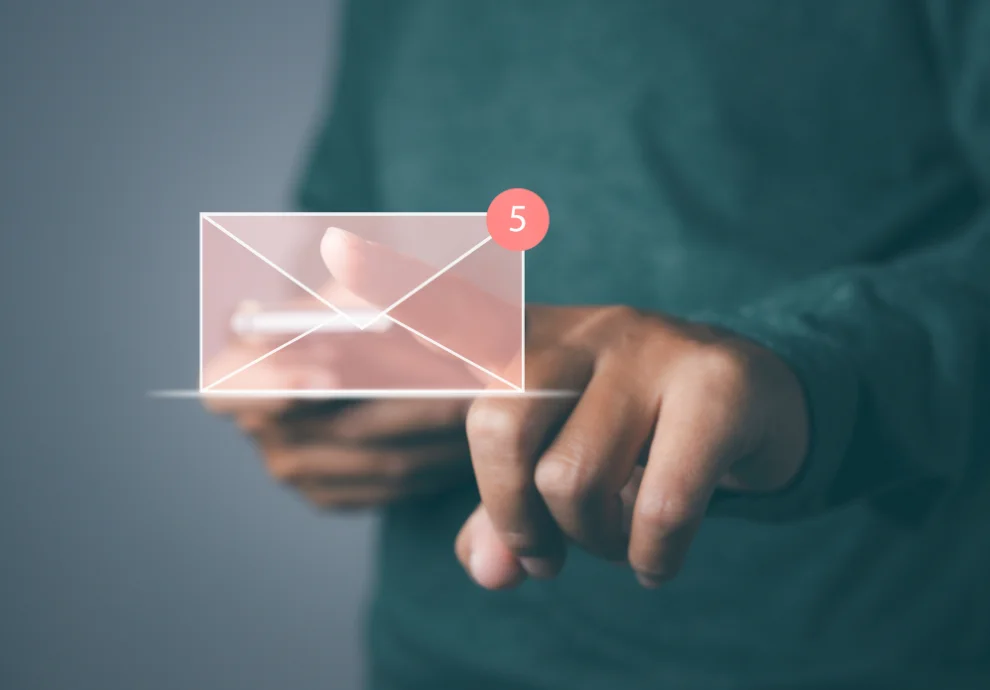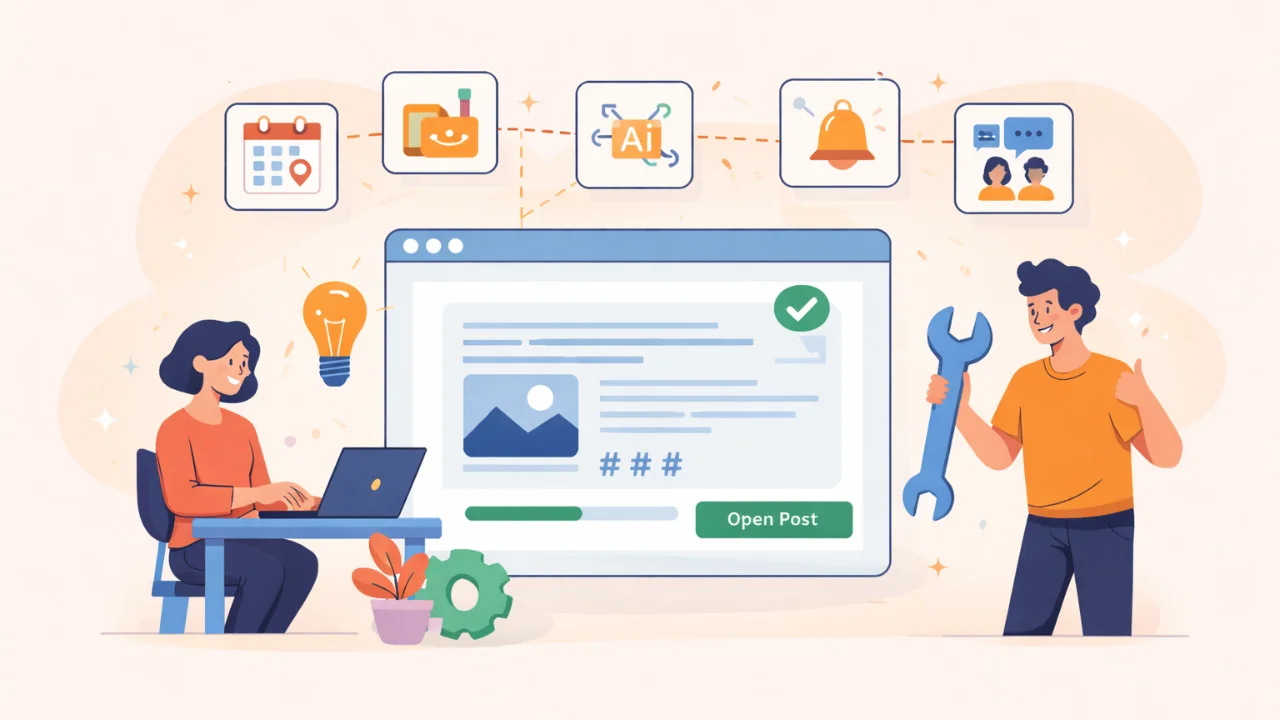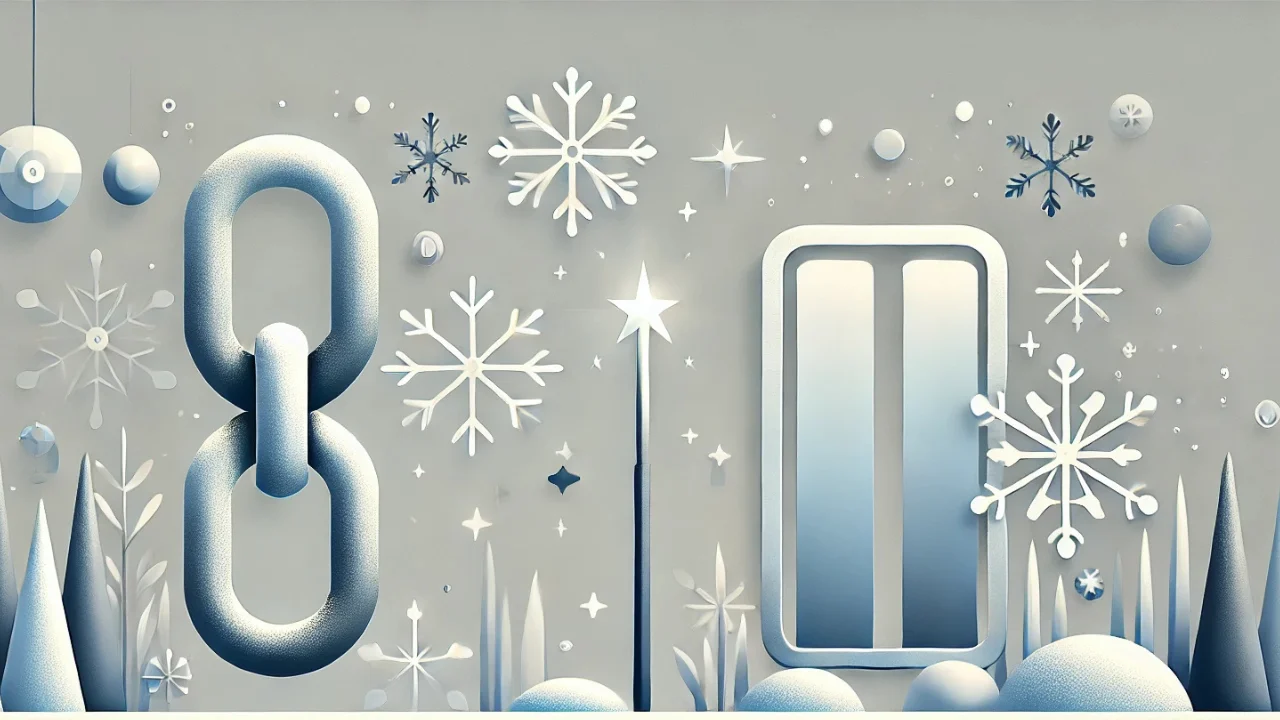Imagine you’ve sent the same email to two clients from different demographic age cohorts. Now, one reacts: “Whoa, this email is fire!” At the same time, the other closes it without reading and thinks: “It makes me feel dizzy.” Or worse—this person may not even open it due to a repelling subject line.
Why so?
The reason is simple yet critical to understand. It’s an enormous divide between two generations (in our case, these were a “Zoomer,” aka Gen Z client, and a “Baby Boomer” in colloquial terms), having particular “tastes” in email communication with companies.
But can you bridge the generation gap in emails for successful business communications and marketing campaigns?
You surely can, and we know how to. This is your Boomer-to-Zoomer guide for understanding generational differences, segmenting your target audience into age groups, and adopting distinct email etiquette across generations to reduce this abyss and establish firmer bonds between your brand and customers.
So, let’s lay the first stone of comprehension.
Introduction to the Generational Gap in Email Comms
The generational gap in email communication is a set of dissimilarities in how various age groups perceive and react to emails. Each generation has specific priorities and inclinations based on their attitudes to technology, communication styles, visuals, interactive elements, etc.
In this article, we’ll focus on four generations and their characteristic features to improve your business communication with them via email:
- Baby Boomers (born ~1946-1964)
- Generation X (born ~1965-1980)
- Generation Y or Millennials (born ~1981-1996)
- Generation Z or Zoomers (born ~1997-2012)
It’s also important to note that the oldest and the youngest audiences are sometimes more prone to opt out of email communications with brands. Grant Aldrich, Founder of Preppy, explains when exactly and what can help you prevent that:
“Whenever they face inconveniences or frustrations, Baby Boomers and some members of Gen X, those seeking comfort and simplicity, tend to switch from email to phone, whereas Gen Z-ers, those with a digital-first mindset, gladly choose instant messaging options via social channels or chats.
However, it doesn’t mean you can’t keep them engaged and communicate effectively via email. It means you shouldn’t lose them with automatic, off-the-shelf messages mailed in bulk to all generations. Instead, segment your audience by age and tailor your e-letters to each demographic cohort.”
The following block of practices for bridging the generational gap in email marketing will set the stage for your next moves. Read on.
Segmenting Your Audience and Adopting Email Etiquette for Different Generations
Let’s perform demographic customer segmentation and prepare multi-generational business emails for your customers.
Tone and Language: Formal vs. Casual Communication Style
“Dear Miss ____” vs. “Hey beauty”; “Best regards” vs. “Cheers” — Can you feel the difference?
From greetings to sign-offs, your brand’s tone of voice and language may sound either formal or informal (casual) in business emails. Let’s outline the differences in generational perceptions.
Formal Communication Style → Best for Baby Boomers and Gen X
In fact, 76% of Boomers advocate for formal email comms with companies, and 60% believe that slang damages the brand image. They may interpret slang phrases as signs of disrespect and rudeness.
Especially if it’s a cold email and you didn’t have any prior contact with a Baby Boomer or Gen X-er, you’d better use formalities to appear more solid and respectful. These may be formal greetings, such as Hello, Dear, Good Morning, etc., and titles like Dr., Mr./Ms./Mrs., or Manager/Director (for professional contexts).
For example:
Pizza Hut starts the first thank-you email with “Dear” to formally greet the new customer.
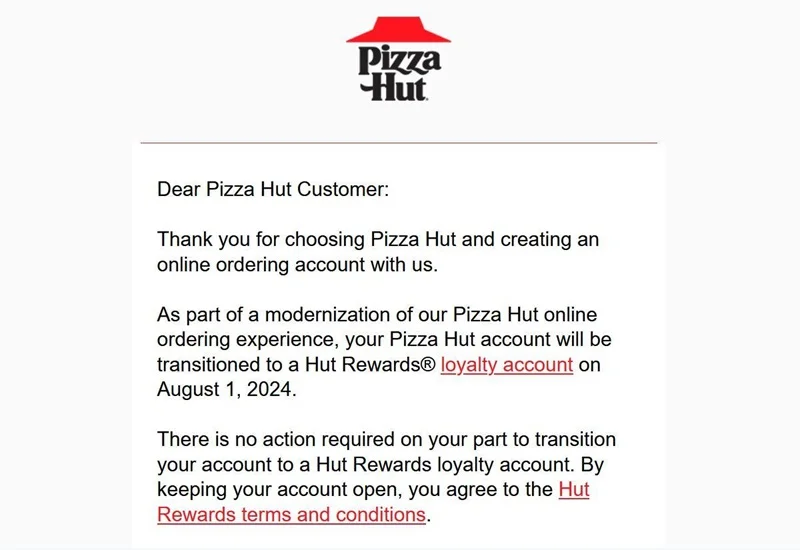
Informal Communication Style → Best for Gen Y and Gen Z
Quite oppositely, Gen Y-ers and Gen Z-ersare after less official and more casual interactions with brands.
“Since we mostly target Millennials and Gen Z mattress buyers,” says Adam Tishman, Co-Founder at Helix Sleep, “we prioritize a friendly and informal language style in emails. We often use slang, internet abbreviations, and industry-specific jargon to cater to the communicational needs of younger generations.”
For example:
See how the Helix Sleep marketing team informally greets the Gen Z customer with “Hi Sleepyhead.”
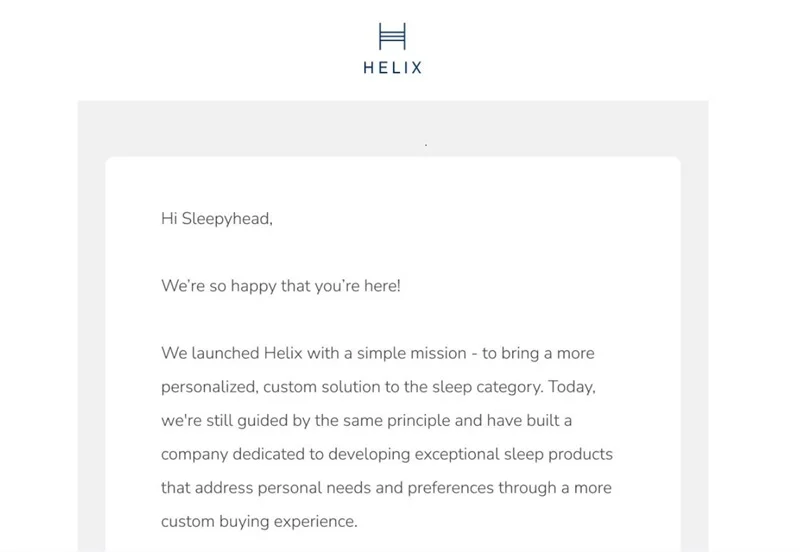
It goes with the subject line: Welcome to sweet dreams & lots of ZZZs. Speaking about subject lines… 👇
Subject Line Discrepancies
Business email copywriting always starts with a captivating subject line.
Subject lines are significant across generations because they are what customers notice first once your email arrives in their inboxes. Still, there are age-driven preferences. Older generations appreciate more descriptive and up-to-the-point subject lines, and youngsters might get a “wow” feeling from something creative, punchy, and out-of-the-ordinary.
Albert Kim, VP of Talent at Checkr, shares how clarity and descriptiveness are prioritized in their business emails:
“Our email subject lines are entirely crafted for business leaders in HR managers in their 30s–50s who are looking for recruitment and workforce management tips.” He also adds, “They are deliberately explicit and explanatory for these generations. We know we can turn away a massive segment of leads from the younger HR audience, and that’s with the subject line. No gimmicks or wordplays. From the first words, our emails are business-like.”
For instance, when promoting a webinar, the Checkr team clearly describes it in the subject line: [Webinar] Culture experts discuss employee growth and recognition.
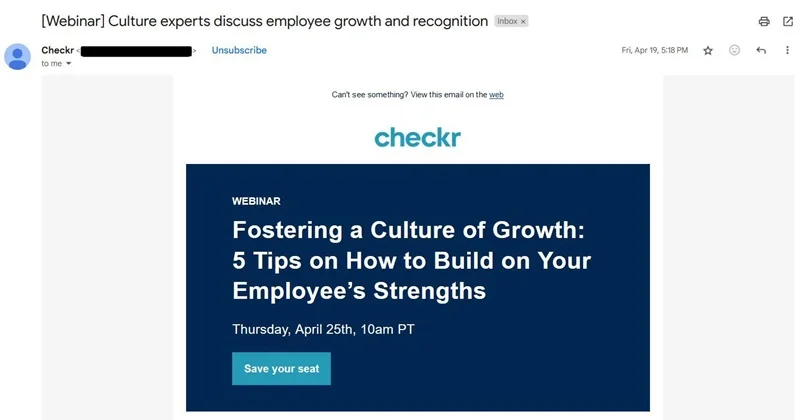
Now, look at these extraordinary, often daring and bold, subject lines targeted at Zoomers and Millennials:
- Foot Fetish? – Dolls Kill
- This heat sucks 🥵 This $5 first box does not 🤩 – BARK
- Who The $#@ Are We?* – Dropship Breakthru
- Can we talk? 💬 – Primark
Email Response Time Expectations
Unlike on social media, where customers hope for rapid-fire company responses within one or two hours, you may think that business email comms should be slower. It’s email, after all.
But —
There’s a generation gap, remember? Not all generations are okay with long waiting times.
Check the anticipated email response times across ages:
- Baby Boomers: 24–48 hours.
- Generation X: 24 hours or less.
- Millennials: Within a few hours to 24 hours.
- Zoomers: Within an hour.
On top of that, there’s one more point to consider. In contrast to Baby Boomers and Gen X-ers, Millennials and Gen Z-ers may even expect after-hours communication via email, disregarding the company’s workday. And if you fail to reply to them, you can lose your customers and profits.
Jeffrey Zhou, CEO and Founder of Fig Loans, notes, “If your email marketing funnel is full of response time gaps, the new generations of customers, potential or existing, will simply ‘leak out.’ To seal these leakages, you need to check your inbox more often and respond faster to your younger audience.”
Content Formatting and Visual Design Preferences
An easy-to-navigate structure and readability are the universally applicable principles in email communication without an overly wide generational gap.
Derek Pankaew, Founder of Listening.com, notes, “We have diverse audiences of different ages, from long-ago-degreed academicians to college freshers, who prefer to turn their emails into audio files and listen to those on the go for convenience. In this context, a well-organized email with concise sentences makes it easier for them to follow the informational flow and grasp every detail.”
Yet, he mentions, “When reading emails, younger generations, Y and Z, particularly favor skimmable content.”
Derek Pankaew advises business professionals to make emails more scannable with visual breaks as follows:
- Headers
- CTA (call-to-action) buttons
- Paragraphs
- Bullet lists
- Videos
- Infographics
It’s not that straightforward, however, with visual appeal in electronic mail among different generations.
If you design business emails for older adults, you must avoid tiny fonts and dazzling colors and pick a calmer color scheme instead, aligning it with your branding. Since eyesight declines with age, it may be tough for a Baby Boomer to read an email copy against a highly saturated, overwhelming background.
For example:
While targeting the 60+ audience, Margaret Manning, the founder of Sixty and Me, uses pastel pink (the brand-identifiable color) and calm visuals in emails with black-on-white readable text.
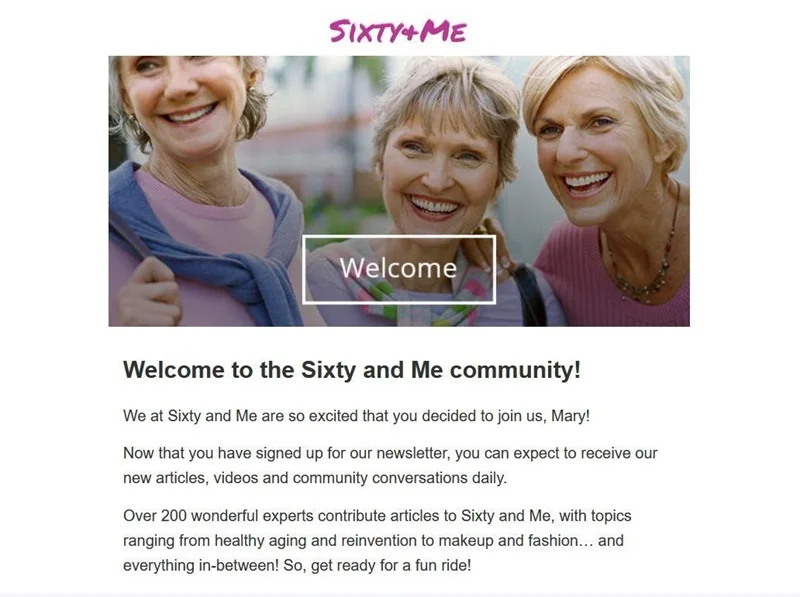
But what if you design emails for the youngest audience?
In this case, energetic, lively colors are your go-to solution. Here’s why. Gen Z-ers literally grow up bathing in color vibrancy on platforms like Instagram or TikTok. Colorful email designs catch their eye, draw them in, and satisfy their need for visually engaging content.
For example, look at this email from BARK.
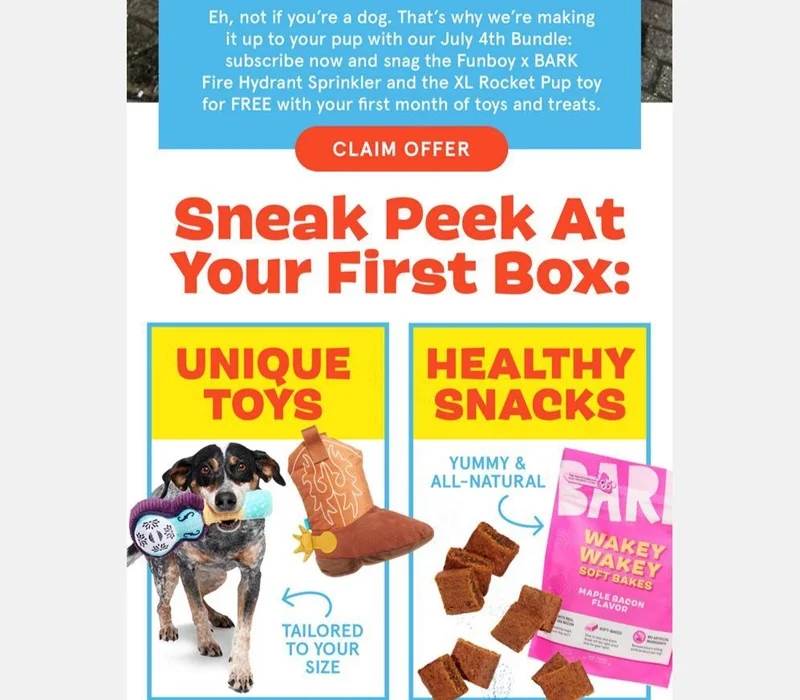
Emojis, GIFs, and Attachments: Acceptable Use Across Ages
Emojis and GIFs
Do you insert emojis when writing business emails to older audiences?
Well, you’d better not. Some Baby Boomers and Gen X regard emojis as unnecessary or even unethical in formal email communications. They may also perceive animated content (motion designs and GIFs) as too distracting and unprofessional unless specifically relevant to the conversation.
In contrast, the emoji+GIF language is a vital force for communicating with Gen Z-ers and Millennials. They would give you a thumbs-up (literally 👍) for using GIFs and emojis as a way to add naturalness and casualness to your marketing emails.
Note: Roughly 40% of companies use emojis, and 58% add GIFs to their email campaigns.
For example:
The subject lines from DollsKill stand out with emojis, and the company’s emails are full of animations, all in brand stylistics.

Attachments
All generations approve of attachments in business email communication.
The key difference, though, hides in the sharing method. If you want to close the generation gap in business emails, you should always keep this in mind.
Final Note on Cross-Generational Email Communication
To fix the generational gap in your business emails, you must find a happy medium between staying on-brand and adapting your communication strategy to every generation of customers.
After striking that balance for email, hop on social media to do the same with Onlypult. Thanks to this social media publishing platform, you can adapt your strategy and accommodate your communication style to every demographic age group. Give it a try and see how Onlypult can help you scale your social reach.
